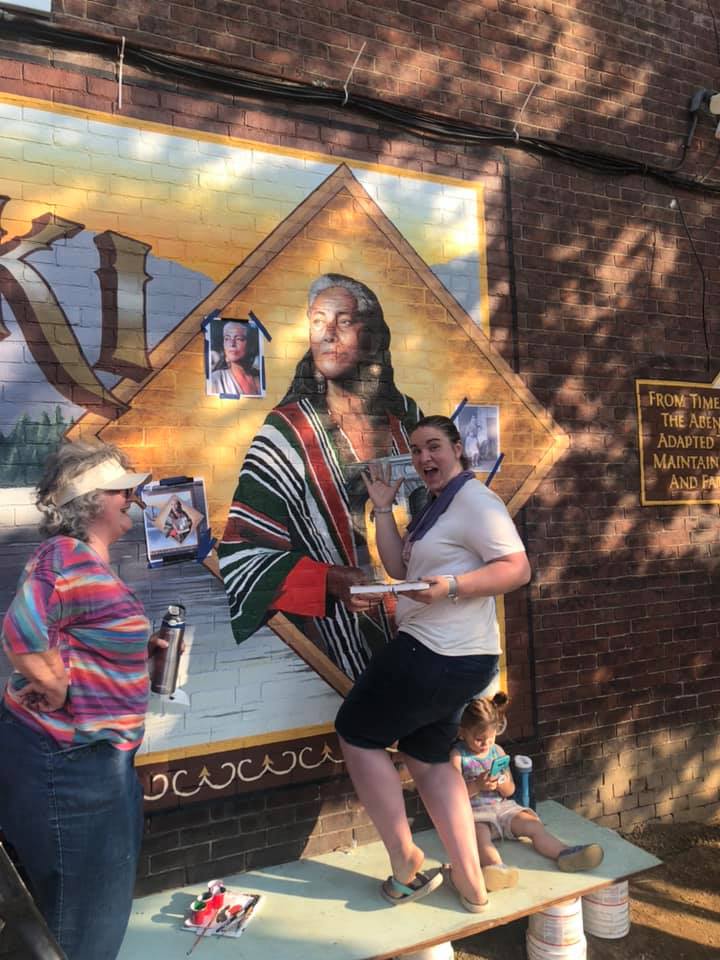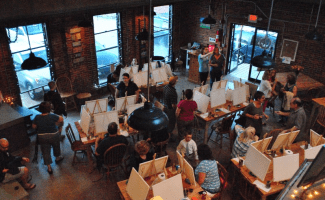
As a means of expression, a language in itself, and a powerful, highly regarded storytelling device, dance is an all-important part of many Native American cultures.
The Monadnock region is the traditional unceded land of the Abenaki people, part of the Wabanaki Confederacy. Sokoki and Penacook have both made this region their home over the centuries. Their cultures continue as part of the complicated cultural fabric of New England. The Abenaki name for this land is N’Dakinna. Learn more about organizations and tribal leaders across New England here.
The Importance of Dance
Dancing serves a significant role in many Native American cultures. As with cultures across the world, dances are commonly performed during religious rituals and other ceremonies. These dances, which are held to guarantee the success of hunts and harvest, give thanks to the land, and more, could be jovial, solemn, or anything in between. There are dances that are performed for fun, and others that signal the beginning of an attack, or war. There are many tribes, confederacies, and Native cultures. We will share a few dances from across the continent. Most dances are specific to either their region or tribe.
Native American Dances
Smoke Dance
Eastern tribes commonly perform the smoke dance. Originally a Haudenosaunee dance, it’s also performed by the Abenaki.
Tales of the dance’s origin vary, but the most common theory involves war. Some tribes performed special dances before war to help warriors prepare for battle. When these warriors returned, the dances turned into slow, ceremonial performances to honor those who came before. During these male-dominated dances, the performers made slow, heavy, and dramatic movements meant to mimic the bravery and strength required on the battlefield.
When war became virtually obsolete, these dances were renamed. Today, they’re referred to as smoke dances. The smoke dance is occasionally performed at Native American powwows. It’s a fantastic way for dancers to show off their athleticism and footwork.
Rain Dance
Agricultural peoples from the drought-prone Southwest, such as the Pueblo, Hopi, Zuni, and Apache, perform a rain dance during the spring planting season as a way to ask the spirits or gods to send water for the tribe’s crops or, alternatively, during long periods of dry, hot weather.
The specifics of the dance vary from tribe to tribe. Most tribes have their own unique rituals and costumes, with some tribes wearing headdresses and others wearing masks.
In the early 19th century, the United States government banned certain ceremonial dances. To bypass these strict laws, tribal members would mask their ceremonial performances as “rain dances.”
Fancy Dance
Another one of the different types of Native American dance is the fancy dance. When the United States government banned certain ceremonial dances, Native Americans across the continent had to find creative ways to keep dancing. To avoid government detection, tribes took their traditional dances underground. Members of the Ponca tribe created the fancy dance as a way to preserve their culture and religion. Based on the traditional war dance, this quick, fast-paced dance was deemed appropriate to perform in public. It was performed for visitors on reservations and at Wild West shows. After the United States’ restrictions on traditional dance disappeared, the fancy dance became a staple at many modern Native American powwows.
Abenaki Culture in our region
The recently founded Atowi Project is a fantastic resource for the Abenaki community on the western side of the Monadnock region. The Atowi Project is an Elnu Abenaki community initiative to affirm Native relationships to the Land and its inhabitants, raise Indigenous voices, and foster inclusion with understanding, in place. To learn more about local native cultures, philosophy, practice, and advocacy, visit the Atowi Project online.

This mural honors the presence of Abenaki people both in the past and today, by depicting people who are directly part of Keene’s history.




